Distinctive features of jasmine rice and what it is used for
Jasmine rice has long been used to prepare a variety of dishes in many cuisines around the world. This unique cereal with an indescribable milky taste and aroma of jasmine flowers can turn any dish into a real gastronomic masterpiece. We will tell you in this article what Thai jasmine rice is and how best to prepare it.
Description of the variety
Jasmine rice is one of the long grain varieties that is grown only in Thailand.. Surprisingly, attempts to cultivate cereal in other countries ended in failure due to the inability to achieve that unique taste and aroma. The whole secret lies in the characteristics of the Thai soil. It is sandy and quite salty.
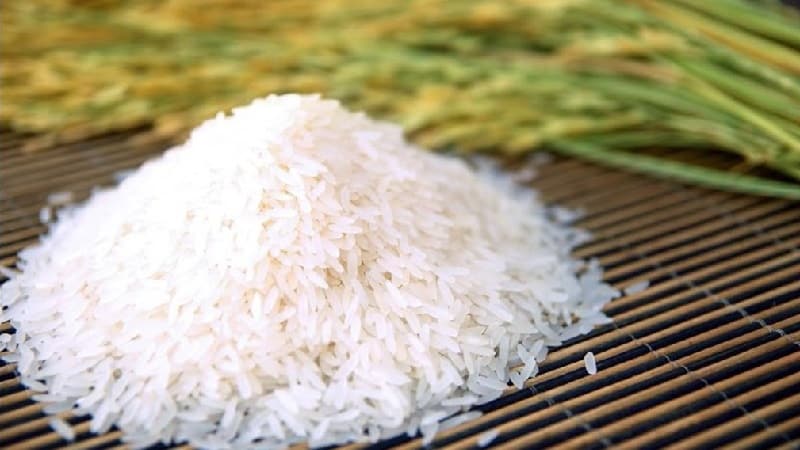
The grains are white, slightly transparent (see photo). They have a narrow oblong shape and a delicate milky aroma. During cooking in water they stick together a little, but do not lose their shape.
Reference. The rice got its name due to its resemblance to white jasmine petals. The most expensive varieties have a bright floral aroma.
Composition and calorie content
Jasmine rice belongs to the class of complex carbohydrates and guarantees long-term saturation. It does not provoke sudden spikes in insulin in the blood, compared to fast carbohydrates, which awaken appetite after a short period of time. This is a hypoallergenic product, gluten-free and gluten-free. Ideal for dietary nutrition.
Chemical composition of cereal:
- vitamins B1, B2, B4, B5, B6, B9;
- vitamin E;
- vitamin K;
- vitamin PP;
- iron;
- calcium;
- magnesium;
- zinc;
- selenium;
- phosphorus;
- manganese;
- sodium;
- iodine.
Nutrients:
- proteins – 7.2 g;
- fats – 0.4 g;
- carbohydrates – 79 g.
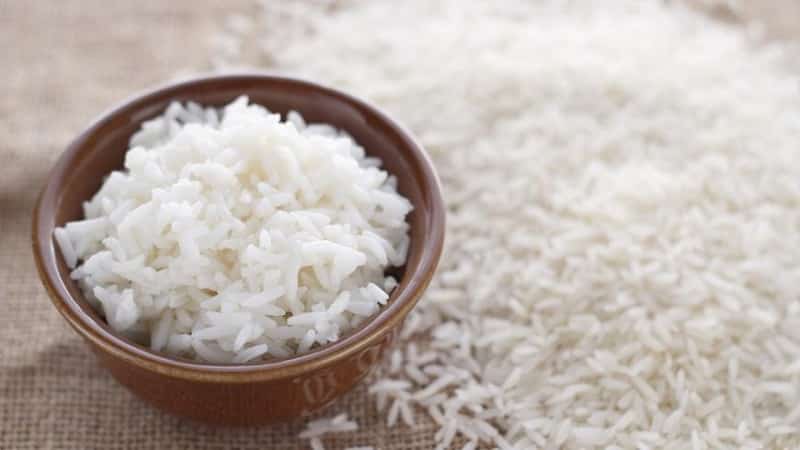
The nutritional value:
- water – 11.62 g;
- ash – 0.64 g;
- fiber – 1.3 g;
- saturated fatty acids – 0.18 g;
- mono- and disaccharides – 0.12 g.
Calorie content of the product is 338 kcal per 100 g.
Read also:
How is Basmati rice different from regular rice?
We lose weight easily and without hunger strikes on the “Rice Diet”
Benefits and harms
The polished grains are treated with steam, which preserves the beneficial substances. Thanks to its rich chemical composition cereal has a positive effect on various body systems:
- cardiovascular;
- digestive;
- endocrine;
- nervous.
Fiber in the product helps improve intestinal contractility, helps cleanse the gastrointestinal tract, reduces the risk of developing cancer.
Rice porridge is useful for heavy metal poisoning. It can be given to children as the product does not contain gluten.
Despite all its usefulness, cereal can also have a negative effect. on human health. Nutritionists do not recommend consuming jasmine rice during weight loss because of its high calorie content. In addition, the product may cause constipation if consumed in excess.
Cereal dishes should be limited to people suffering from diabetes.. The product has a fairly high glycemic index - 70. Exceeding the daily norm leads to sharp jumps in blood glucose.
How to choose good rice
When choosing cereals pay attention to appearance, smell and cost.
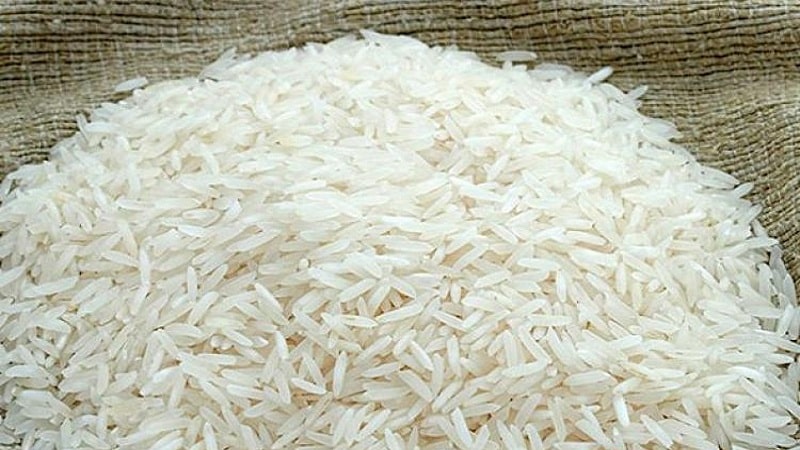
A quality product has the following characteristics::
- the grains are even, oblong, with a smooth surface, without cracks or spots;
- The aroma is pronounced, you can feel it even through the packaging.
Pay attention to the expiration date and processing methods of the cereal.. The manufacturer indicates this information on the packs.
Reference. The more expensive the rice, the higher its quality.
How to cook and serve
Thai chefs with extensive experience in preparing jasmine rice, insist that grains should not come into contact with water. They tie the rice in a muslin cloth and cook it in a special steamer.
Reference. Muslin is a thin and at the same time durable natural fabric that is breathable.
How to cook Jasmine at home without turning it into a sticky mass? It's actually quite simple. To do this, you can use a regular stove, oven or slow cooker.
To cook in a saucepan, wash the rice under the tap until the water runs clear. and shake. The ideal ratio of rice and water is 1:2. For example, 100 g of product will require 200 g of salted water.

Place the pan on high heat and after boiling, reduce to low. Cook for 10-15 minutes and turn off. Wrap in a kitchen towel and leave for another 10 minutes. During this time, the grains of rice will completely absorb moisture. Properly cooked rice does not lose its shape.
For cooking in the oven, use the same ratio of products as for cooking on the stove.. Place pre-washed rice in a heat-resistant container, add water and place in the oven for 30 minutes at 160°C. The dish can be considered ready after the moisture has completely evaporated.
Cooking jasmine rice in a slow cooker as easy as pie. The cereal is washed in several waters, poured into a bowl and cold water is poured in a ratio of 1:1.5. Salt to taste and select the “Pilaf” or “Rice” mode (functionality depends on the model of equipment and manufacturer). Cooking time 30 minutes.
What is cereal used for? Jasmine rice is served as a side dish for meat, fish, filling open and closed pies, and used for making desserts.. The grains instantly absorb various hot, sour and sweet sauces. The product goes well with herbs and spices, fruits and vegetables. In Thailand, rice dishes made with coconut milk are especially popular.
Take note of a few recipes dishes with this wonderful cereal.
Rice with shrimp and arugula
Ingredients:
- rice vinegar – 80 ml;
- Jasmine rice – 400 g;
- cane sugar – 45 g;
- fresh arugula – 100 g;
- sesame oil – 45 ml;
- head of garlic;
- lemon – 2 pcs.;
- thawed or fresh shrimp – 400 g;
- fish sauce – 2 tbsp. l.
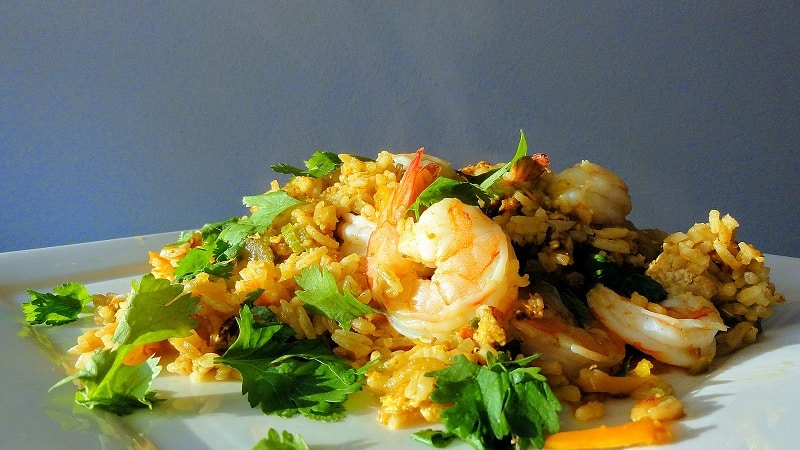
Preparation. Boil the rice until half cooked. Heat oil in a deep frying pan and fry finely chopped garlic in it. Pour in lemon juice, vinegar, fish sauce and add sugar. Bring the liquid to a boil, throw in the shrimp, arugula and carefully lay out the rice. Everything is prepared very quickly. Stir the ingredients, cover the pan with a lid and remove from heat. Let sit for five minutes and serve.
Rice with cashews and dried fruits
Ingredients:
- Jasmine rice – 200 g;
- cashew nuts – 70 g;
- dried apricots – 70 g;
- raisins – 70 g;
- a bunch of mint;
- unrefined coconut oil - 50 ml.
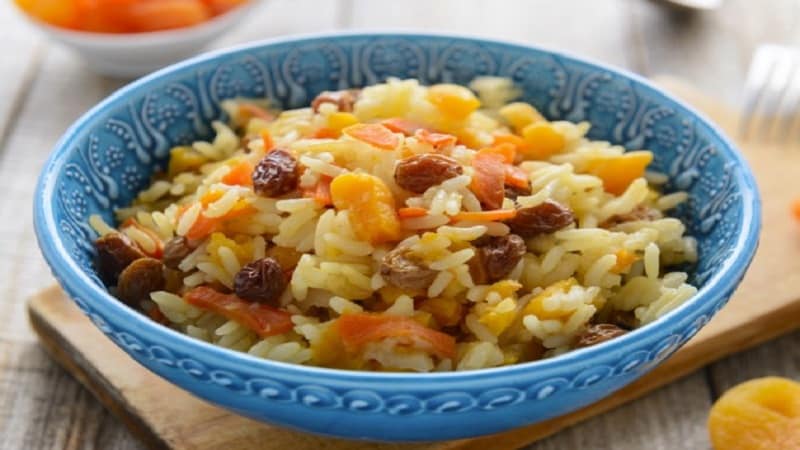
Preparation. Boil the cereal until tender. Lightly fry the nuts in oil, add dried fruits and simmer a little. Add rice, stir gently and fry over medium heat for 10 minutes. Two minutes before cooking, add finely chopped mint.
How to store
Packaged raw jasmine rice is stored in a dry, dark place. about six months.Yellowed grains, covered with dark spots and having lost their characteristic aroma, indicate that it is time to throw away the product.
The finished product is stored in the refrigerator – 3-4 days in a container with an airtight lid.
About other cereals:
What is triticale, what does it look like and where is it used?
Conclusion
Jasmine rice is a universal and healthy cereal, the taste of which is appreciated far beyond the borders of the country where it grows. The product is good as an independent dish, a side dish for meat, fish and seafood. Its milky taste and light floral aroma make it an ideal base for preparing desserts. With proper and standardized use, the body receives minerals and vitamins in sufficient quantities without harm to health.